In-depth analysis of brass polish: working principle, types and application methods
Brass, as an important industrial material, is widely used in many fields due to its good mechanical properties, corrosion resistance and beautiful appearance.
However, during long-term use, the surface of brass is easily oxidized, dirt and scratches are generated, affecting its beauty and function. Therefore, brass polish, as an important material for brass surface treatment, has received widespread attention.
This article will conduct an in-depth discussion on the working principle, types, application methods, advantages and disadvantages, and future development trends of brass polish.
1.Working principle of brass polish
Brass polish mainly removes the oxide layer, dirt and scratches on the surface of brass through chemical reaction and physical friction, restoring its original luster and beauty.
Specifically, brass polish contains acidic substances (such as phosphoric acid, sulfuric acid, etc.) and friction agents (such as aluminum oxide, silicon dioxide, etc.). Acidic substances can react chemically with the oxide layer on the surface of brass to generate compounds that are easy to remove; friction agents further remove dirt and scratches on the surface through mechanical friction, thereby achieving the effect of polishing.
(1) Chemical reaction
The main components of brass are copper and zinc. Its surface easily forms a layer of copper oxide and zinc oxide in the atmospheric environment. The acidic substances in the polishing agent (such as phosphoric acid, sulfuric acid, etc.) react chemically with these oxides to form water-soluble compounds.
For example, copper oxide reacts with sulfuric acid to form copper sulfate and water, and zinc oxide reacts with phosphoric acid to form zinc phosphate and water. These compounds are removed in time during the polishing process, thereby removing the oxide layer on the surface.
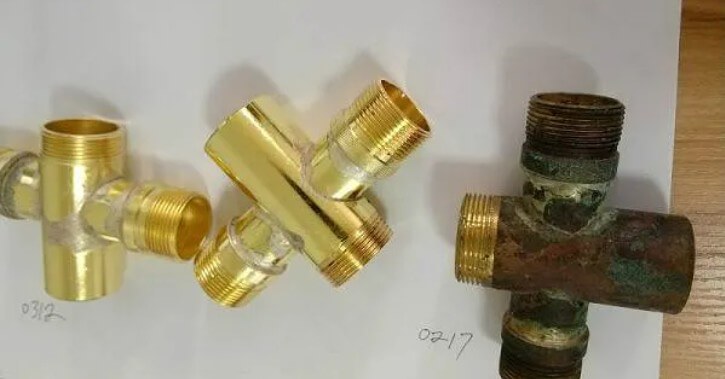
(2) Physical friction
The abrasives in the polishing agent (such as aluminum oxide, silicon dioxide, etc.) play a role in mechanical friction during the polishing process. These abrasive particles, driven by the polishing cloth or polishing wheel, rub against the brass surface to further remove dirt and scratches on the surface.
The particle size and hardness of the abrasive have an important influence on the polishing effect. Generally speaking, the finer the particles, the finer the polishing effect; the coarser the particles, the more significant the polishing effect, but it may cause certain damage to the surface.
2.Types of brass polishing agents
Depending on their different ingredients and uses, brass polishing agents can be divided into many types. The following are several common brass polishes:
(1) Acidic polishes
Acidic polishes are one of the most widely used brass polishes. Their main ingredients include acidic substances such as phosphoric acid and sulfuric acid. Acidic polishes have strong deoxidation ability and can quickly remove the oxide layer and dirt on the brass surface. However, acidic polishes also have a certain corrosive effect on the brass matrix. When using them, the time and concentration need to be strictly controlled to avoid damage to the brass.
(2) Neutral polishes
The main ingredients of neutral polishes are some mild surfactants and abrasives. Neutral polishes are less corrosive to brass and are suitable for brass products with high surface requirements, such as musical instruments, decorations, etc. The polishing effect of neutral polishes is relatively slow, but it can maintain the gloss and fineness of the brass surface.
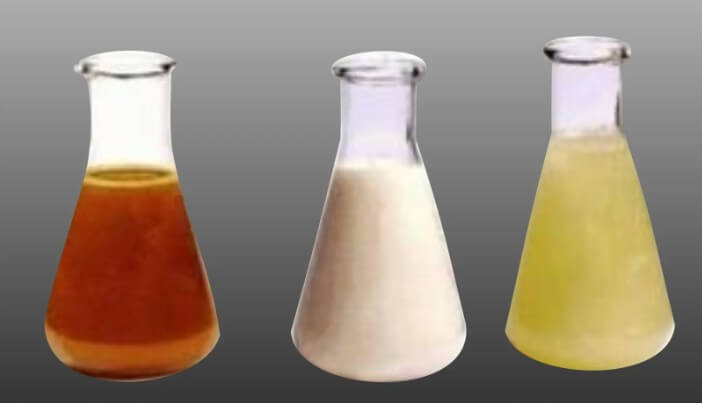
(3) Polishes containing ammonia
Ammonia has the ability to dissolve copper oxide, so some polishes add ammonia as an ingredient. This polish is suitable for removing mild oxidation and dirt on the brass surface and is simple and convenient to operate. However, ammonia has a certain pungent smell and requires good ventilation when used.
(4) Professional polishing paste
Professional polishing paste usually contains fine abrasives and chemical ingredients and is suitable for fine polishing. The use method of polishing paste is generally to polish with a cloth wheel or polishing machine, which has significant effects, but the cost is relatively high. Professional polishing paste is widely used in the polishing of high-end brass products, such as precision instruments, jewelry, etc.
3.Application method of brass polishing agent
The application method of brass polishing agent varies depending on the type and purpose. The following are several common application methods of brass polishing agents:
(1) Use of acidic polishing agent
1) Clean the surface:
First, clean the brass surface with clean water or detergent to remove dust and oil on the surface.
2) Apply polishing agent:
Apply the acidic polishing agent evenly on the brass surface. You can use cotton cloth, sponge or sprayer to apply it.
3) Standing reaction:
Let the polishing agent stand on the brass surface for a period of time to allow it to chemically react with the oxide layer. Generally speaking, the standing time ranges from a few minutes to more than ten minutes, depending on the type of polish and the degree of surface oxidation.
4) Wipe and clean:
Rinse the brass surface thoroughly with clean water to remove residual polish and reaction products. Then wipe it clean with a clean cloth.
5) Dry protection:
Let the brass products air dry or blow dry, and then apply a layer of protective wax or oil to prevent re-oxidation.
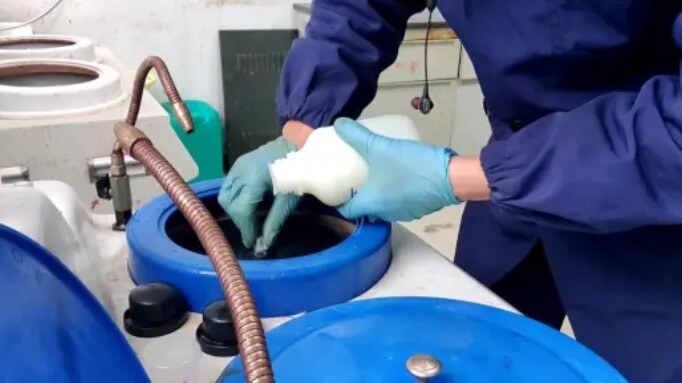
(2) How to use neutral polish
1) Clean the surface:
The same as the method of using acid polish.
2) Apply polish:
Apply the neutral polish evenly on the brass surface, and you can use cotton cloth or sponge to apply it.
3) Wipe and polish:
Wipe and polish with a clean cotton cloth or polishing wheel until the surface regains its gloss.
4) Clean and dry:
Rinse the brass surface with clean water, and then air dry or blow dry.
4.Advantages and Disadvantages of Brass Polishing Agents
(1) Advantages
1) Good polishing effect:
Brass polishing agent can quickly remove the oxide layer, dirt and scratches on the surface, restoring the original luster and beauty of brass.
2) Simple operation:
The use of brass polishing agent is relatively simple and does not require complex equipment and skills.
3) Wide range of applications:
Brass polishing agent is suitable for a variety of brass products, such as architectural decoration, musical instruments, ships, aerospace and other fields.
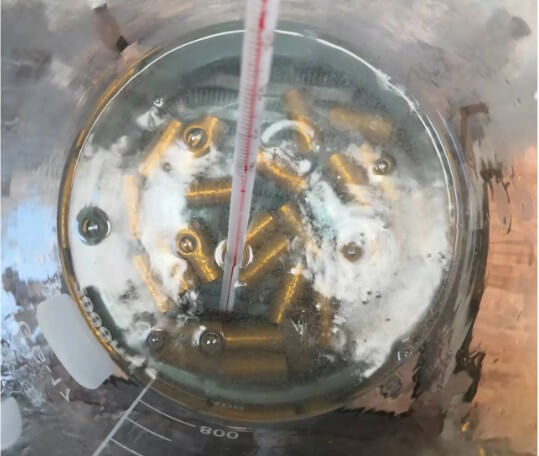
(2) Disadvantages
1) Corrosiveness:
Acidic polishing agent has a certain corrosive effect on the brass matrix, and the time and concentration need to be strictly controlled when using it.
2) Irritation:
Some polishing agents contain irritating substances, such as ammonia water, and good ventilation is required when using them.
3) High cost:
Some professional polishing pastes are expensive and not suitable for large-scale use.
5.Future development trends
With the continuous advancement of science and technology and the improvement of environmental awareness, the development of brass polishing agents will show the following trends:
(1) Environmentally friendly polishing agents
Traditional acidic polishing agents have certain hazards to the environment and human health. In the future, more environmentally friendly polishing agents will be developed, such as polishing agents based on biotechnology. These polishing agents use natural plant extracts as the main ingredients and are harmless to the environment and human health.
(2) High-efficiency and multifunctional polishing agents
In the future, brass polishing agents will develop in the direction of high efficiency and multifunctionality. They not only have polishing effects, but also can remove oil stains, prevent rust, and prevent oxidation. This can simplify the polishing process and improve work efficiency.
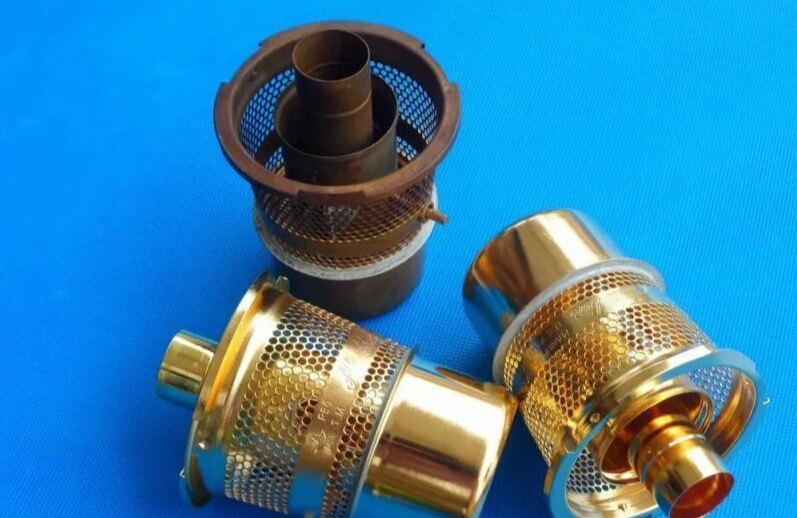
(3) Intelligent polishing technology
With the continuous development of intelligent manufacturing, intelligent polishing technology will also be applied to the field of brass polishing. Through robots and automated equipment, automatic polishing of brass products can be achieved, polishing efficiency and accuracy can be improved, and manual operations can be reduced.
(4) Personalized customization
According to the needs of different brass products, personalized brass polishing agents will be developed in the future. For example, in response to the needs of different fields such as musical instruments, decorations, and precision instruments, polishing agents with specific functions are developed to meet the needs of different customers.
6.Summary
As an important material for brass surface treatment, brass polishing agent plays an important role in industrial production and daily life. By deeply understanding the working principle, types, and application methods of brass polishing agent, we can make better use of this material and improve the quality and aesthetics of brass products.
